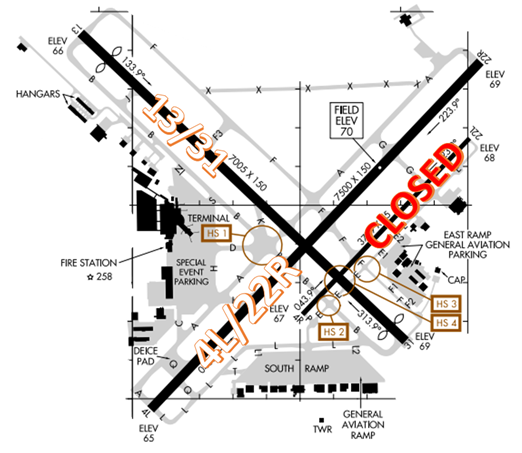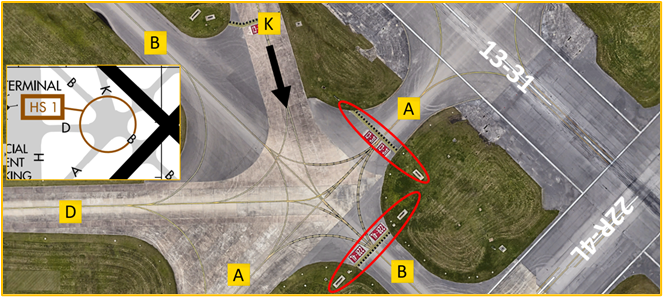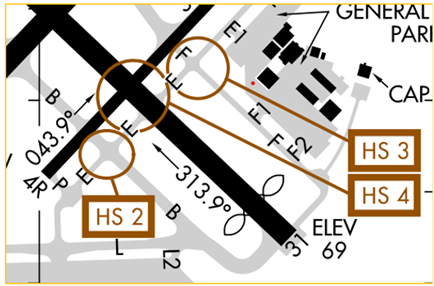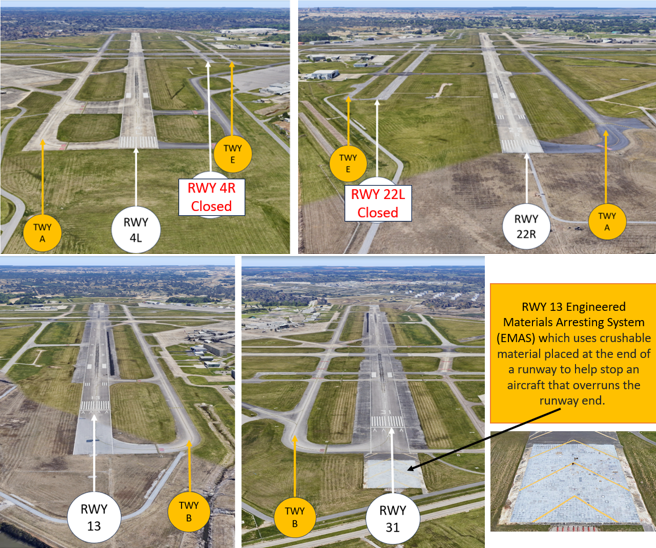Baton Rouge Metropolitan Airport (BTR)
Baton Rouge Metropolitan Airport (BTR) also known as Ryan Field, is a public use airport located four miles north of the central business district of Baton Rouge, Louisiana. It's a mixed-use airport with commercial, transient, and local GA, air taxi and military aircraft operations. It has a parallel runways and a complex system of taxiways. View a printable Pilot Handbook of the BTR information found on this Web page.

Know Before You Go
The RWY configuration consists of parallel RWYs 4L/22R and intersecting RWY 13/31.
RWY 4R/22L is permanently closed but still depicted on the Airport Diagram. Pilots must have a clearance to cross RWY 4R/22L active or not. Additional airport construction activities ongoing. Check NOTAMS!
The airspace at BTR is Class C (Refer to Sectional Chart).
Below find various BTR-specific information and things to be aware of, as well as general information to inform your preflight planning. This will be reviewed quarterly and updated as needed. This information is to supplement the From the Flight Deck Videos that are produced by the FAA Runway Safety Group. Here you will also find information provided by the local air traffic controllers at the airport where you intend to fly. The information is subject to change. Not for navigation or legal* pre-flight action. Always refer to official pre-flight materials such as, but not limited to, NOTAMs, airport diagrams, VFR charts and airport construction notices for the latest airport-specific details.
BTR ATCT operates 0500L- 0000L Daily
Administrative Office Open 0800L to 1600L M-F
Business Phone 225-354-2100
Hot Spots
HS1: Complex intersection TWY A, TWY B, TWY D and TWY K west of RWY 13/31 and RWY 4L/22R.

- Pilots landing on RWY 13 and exiting on TWY K have become confused and have taxied back onto an active RWY.
- Depending on where an aircraft is parking, taxi routes in this area may include instructions to hold short of either RWY 13/31 or RWY 4L/22R.
- Above ground signage and surface painted markings are present in this area to assist pilots taxiing in this area.

HS2: RWY 4R/22L and TWY E in close proximity, pilots sometime confuse the RWY as TWY E.
HS3: Aircraft taxiing from TWY F, turning onto TWY E southbound, sometime cross the RWY 13/31 hold bar without authorization.
HS 4: Pilots exiting RWY 13 onto TWY E sometimes exit onto RWY 4R/22L without authorization.
- For all of the BTR Hotspots, actively scanning to locate and identify RWY signs, markings, and lighting and deferring all heads down activities until holding short at the appropriate location will help eliminate these errors.
- It is always okay to verify with the TWR when you are unsure whether to hold or proceed.
Wrong Surface Landing Risk
- The risk of landing or taking off on a TWY exists whenever a TWY runs full-length to a RWY.
- Loading an instrument approach or GPS Waypoint, when available, to the assigned RWY will help pilots ensure they are lined up for the proper surface.
- RWY Markings are white. Markings on surfaces not used for takeoff/landing like TWY markings, chevrons, RWY shoulder and RWY turn-on markings etc., are yellow.
- If you are ever in doubt of your instructions or your position, ask the TWR.
- View the From the Flight Deck-Wrong Surface Landings video for additional mitigation strategies.

General
- Always read back Hold Short instructions with your call-sign. It is our responsibility to ensure this happens, so if you do not read it back correctly, be patient with us asking you to do so multiple times.
- Bird activity on and in vicinity of the airport.
- Engineered Material Arresting System (EMAS) located at departure end of RWY 13.
Traffic Patterns
- When TWR is closed conduct Right Traffic Pattern on RWY 22R.
Ground Control
- Taxi with caution, try not to be in a hurry no matter the situation.
- There are intermittent blind spots on Ground Control 121.9 frequency on the East Ramp. Pilots may need to reposition on the ramp to transmit/receive.
Takeoff/Departure
- Read back assigned heading and runway clearance including callsign.
- Pay close attention to parallel runway assignments and read back right or left with the instructions given by tower/approach.
Arrival/Landing
- Read back runway assignments including callsign when issued take-off/landing clearances.
- Pay close attention to parallel runway assignments and read back right or left with the instructions given by tower/approach.
Special Traffic-Helicopters
- VFR helicopters will be instructed by Approach Control to enter a boundary of the airport (East/West/North/South). After being switched to the tower, helicopters should advise the tower where they are parking and expect a clearance or landing advisory shortly after.
